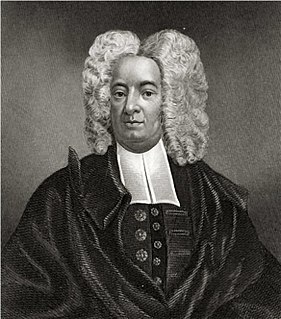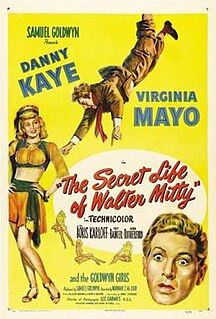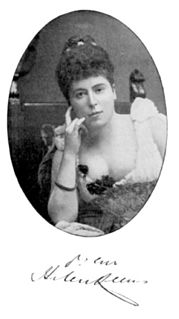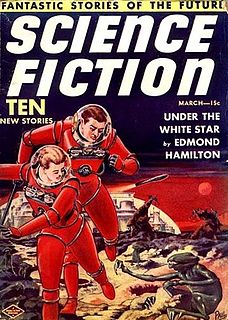
Cotton Mather was a New England Puritan minister, prolific author, and pamphleteer. He left a scientific legacy due to his hybridization experiments and his promotion of inoculation for disease prevention, though he is most frequently remembered today for his involvement in the Salem witch trials. He was subsequently denied the presidency of Harvard College which his father, Increase Mather, had held.

Amazing Stories is an American science fiction magazine launched in April 1926 by Hugo Gernsback's Experimenter Publishing. It was the first magazine devoted solely to science fiction. Science fiction stories had made regular appearances in other magazines, including some published by Gernsback, but Amazing helped define and launch a new genre of pulp fiction.

The Magazine of Fantasy & Science Fiction is a U.S. fantasy and science fiction magazine first published in 1949 by Fantasy House, a subsidiary of Lawrence Spivak's Mercury Press. Editors Anthony Boucher and J. Francis McComas had approached Spivak in the mid-1940s about creating a fantasy companion to Spivak's existing mystery title, Ellery Queen's Mystery Magazine. The first issue was titled The Magazine of Fantasy, but the decision was quickly made to include science fiction as well as fantasy, and the title was changed correspondingly with the second issue. F&SF was quite different in presentation from the existing science fiction magazines of the day, most of which were in pulp format: it had no interior illustrations, no letter column, and text in a single column format, which in the opinion of science fiction historian Mike Ashley "set F&SF apart, giving it the air and authority of a superior magazine".

Arthur Benjamin Reeve was an American mystery writer. He is best known for creating the series character Professor Craig Kennedy, sometimes called "The American Sherlock Holmes", and Kennedy's Dr. Watson-like sidekick Walter Jameson, a newspaper reporter, in 18 detective novels. The bulk of Reeve's fame is based on the 82 Craig Kennedy stories, published in Cosmopolitan magazine between 1910 and 1918. These were collected in book form; with the third collection, the short stories were stitched together into pseudo-novels. The 12-volume Craig Kennedy Stories were released in 1918; it reissued Reeve's books-to-date as a matched set.

Planet Stories was an American pulp science fiction magazine, published by Fiction House between 1939 and 1955. It featured interplanetary adventures, both in space and on some other planets, and was initially focused on a young readership. Malcolm Reiss was editor or editor-in-chief for all of its 71 issues. Planet Stories was launched at the same time as Planet Comics, the success of which probably helped to fund the early issues of Planet Stories. Planet Stories did not pay well enough to regularly attract the leading science fiction writers of the day, but occasionally obtained work from well-known authors, including Isaac Asimov and Clifford D. Simak. In 1952 Planet Stories published Philip K. Dick's first sale, and printed four more of his stories over the next three years.

Scalped is a 60 issue crime/western comic book series written by Jason Aaron and illustrated by R. M. Guéra, published monthly by Vertigo Comics. Issue #1 was published on January 3, 2007.
Stanley John Joseph Pitt was an Australian cartoonist and commercial artist. Pitt was the first Australian comic artist to have original work published by a major American comic book company. He often collaborated with his brother, Reginald Pitt.
Mary Webster was a resident of colonial New England who was accused of witchcraft and was lynched by friends of the accuser but survived.

John Ashley was an American actor, producer and singer. He was best known for his work as an actor in films for American International Pictures, producing and acting in horror movies shot in the Philippines, and for producing various television series, including The A-Team.

John Cromwell Mather is an American astrophysicist, cosmologist and Nobel Prize in Physics laureate for his work on the Cosmic Background Explorer Satellite (COBE) with George Smoot.

The Secret Life of Walter Mitty is a 1947 Technicolor comedy film, loosely based on the 1939 short story of the same name by James Thurber. The film stars Danny Kaye as a young daydreaming proofreader for a magazine publishing firm and Virginia Mayo as the girl of his dreams. The film was adapted for the screen by Ken Englund, Everett Freeman, and Philip Rapp, and directed by Norman Z. McLeod.

Smuggler's Cove is a 1948 comedy film starring The Bowery Boys. The film was released on October 10, 1948 by Monogram Pictures and is the eleventh film in the series.

Ellen Buckingham Mathews (1853–1920) was a popular female English novelist during the late 19th and early 20th centuries. She was also known as Mrs Reeves after her marriage in 1877 to Dr. Henry Albert Reeves (1841–1914) but was best known under her pen name, Helen Mathers. She was born in Misterton, Somerset. Her first novel, "Comin' thro' the Rye" was published in 1875. It was partly based on people in her life and on her own early romantic experiences. She also acknowledged Rhoda Broughton as an early influence. She continued to write until her death.

Clifford Martin Eddy Jr. was an American author known for his horror, mystery and supernatural short stories. He is best remembered for his work in Weird Tales magazine and his friendship with H.P. Lovecraft.

Scoops was a weekly British science fiction magazine published by Pearson's in tabloid format in 1934, edited by Haydn Dimmock. Scoops was launched as a boy's paper, and it was not until several issues had appeared that Dimmock discovered there was an adult audience for science fiction. Circulation was poor, and Dimmock attempted to change the magazine's focus to more mature material. He reprinted Arthur Conan Doyle's The Poison Belt, improved the cover art, and obtained fiction from British science fiction writers such as John Russell Fearn and Maurice Hugi, but to no avail. Pearson's cancelled the magazine because of poor sales; the twentieth issue, dated 23 June 1934, was the last. The failure of the magazine contributed to the belief that Britain could not support a science fiction magazine, and it was not until 1937, with Tales of Wonder, that another attempt was made.

Lawrence Eisenberg was an American biomedical engineer and science fiction writer. He is best known for his short story "What Happened to Auguste Clarot?", published in Harlan Ellison's anthology Dangerous Visions. Eisenberg's stories have also been printed in a number of leading science fiction magazines, including The Magazine of Fantasy & Science Fiction, Galaxy Science Fiction, and Asimov's Science Fiction. His stories have been reprinted in anthologies such as Great Science Fiction of the 20th Century, The 10th Annual of the Year’s Best S-F, and Great Science Fiction By the World's Great Scientists. He is also known for the limericks he posted in the comments sections of various articles in The New York Times.

The Sign of Four is a 1932 British crime film directed by Graham Cutts and starring Arthur Wontner, Ian Hunter and Graham Soutten. The film is based on Arthur Conan Doyle's second Sherlock Holmes novel The Sign of the Four (1890). The film is also known as The Sign of Four: Sherlock Holmes' Greatest Case.

Satellite Science Fiction was an American science-fiction magazine published from October 1956 to April 1959 by Leo Margulies' Renown Publications. Initially, Satellite was digest sized and ran a full-length novel in each issue with a handful of short stories accompanying it. The policy was intended to help it compete against paperbacks, which were taking a growing share of the market. Sam Merwin edited the first two issues; Margulies took over when Merwin left and then hired Frank Belknap Long for the February 1959 issue. That issue saw the format change to letter size, in the hope that the magazine would be more prominent on newsstands. The experiment was a failure and Margulies closed the magazine when the sales figures came in.

Future Science Fiction and Science Fiction Stories were two American science fiction magazines that were published under various names between 1939 and 1943 and again from 1950 to 1960. Both publications were edited by Charles Hornig for the first few issues; Robert W. Lowndes took over in late 1941 and remained editor until the end. The initial launch of the magazines came as part of a boom in science fiction pulp magazine publishing at the end of the 1930s. In 1941 the two magazines were combined into one, titled Future Fiction combined with Science Fiction, but in 1943 wartime paper shortages ended the magazine's run, as Louis Silberkleit, the publisher, decided to focus his resources on his mystery and western magazine titles. In 1950, with the market improving again, Silberkleit relaunched Future Fiction, still in the pulp format. In the mid-1950s he also relaunched Science Fiction, this time under the title Science Fiction Stories. Silberkleit kept both magazines on very slim budgets throughout the 1950s. In 1960 both titles ceased publication when their distributor suddenly dropped all of Silberkleit's titles.

Scientific Detective Monthly was a pulp magazine that published fifteen issues beginning in January 1930. It was launched by Hugo Gernsback as part of his second venture into science-fiction magazine publishing, and was intended to focus on detective and mystery stories with a scientific element. Many of the stories involved contemporary science without any imaginative elements—for example, a story in the first issue turned on the use of a bolometer to detect a black girl blushing—but there were also one or two science fiction stories in every issue.


















